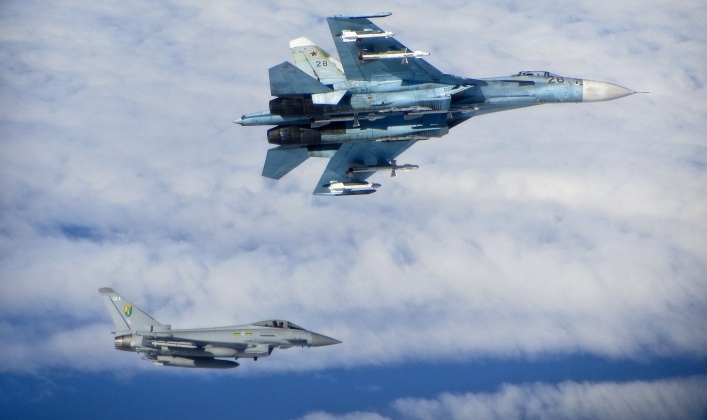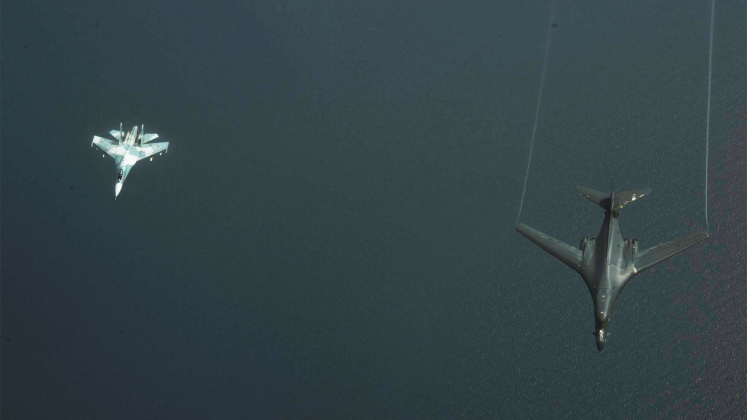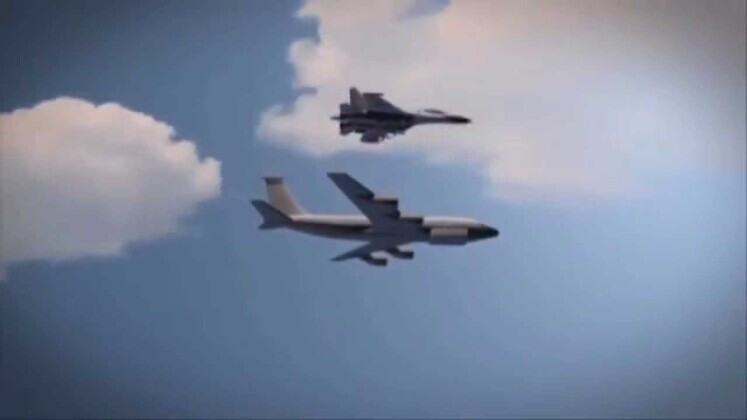News
Russian Su-27s Forward Deployed in Kaliningrad: How Air Superiority Fighters Engage NATO’s Fleets
Russian Su-27 Flanker air superiority fighters deployed in the enclave of Kaliningrad have had among the most frequent engagements with NATO forces since tensions between Moscow and the Western alliance rose to new heights in 2014. Kaliningrad has for over a decade been one of the most heavily militarised regions of Russia, and lies on the Baltic Sea between Poland and Lithuania, separated from the Russian mainland NATO members Lithuania and Latvia. While the territory’s location leaves it particularly vulnerable to Western attacks in the event of a major war, it also serves as a staging ground allowing Russian Iskander-M ballistic missile, Bastion cruise missile systems and long range air defence systems such as the S-400 to engage targets deeper into Europe. The enclave’s highly strategic position has resulted in the deployment of some of the Russian Armed Forces’ most capable assets to defend it, including new motorised rifle, artillery and tank regiments which were deployed there in December 2020. As tensions around the Kaliningrad have remained consistently high, Su-27s based there have been among the most frequently scrambled of all fighter units in Russian service.

Although their capabilities have been overshadowed for over a decade by newer additions to the Russian fighter fleet, the Su-27 has continued to play a limited role, including participating in hostilities in the Ukrainian theatre. The aircraft was first brought into service in both the Soviet Air Force and the Air Defence Forces in 1984, and is widely considered to be the most capable class of air superiority fighter to have entered service during the Cold War. This conclusion was supported by both simulated combat between the aircraft and U.S. Air Force F-15s, and by the results of extensive testing of the aircraft done in the United States after a limited number were procured from Belarus and Ukraine in the 1990s. Despite highly ambitious upgrade programs such as the Su-27SM3 which have been applied to small parts of the fleet, the Su-27’s standing has nevertheless diminished significantly since the end of the Cold War, with the aircraft’s ageing sensors and weaponry and its lack of stealth capabilities limiting its ability to go head to head with the elite of NATO fleets as it could in the 1980s and 1990s.

Su-27s based in Kaliningrad have often intercepted or otherwise engaged Western aircraft particularly from 2014, with a notable example being the interception of a Swedish Air Force Gulfstream surveillance plane on October 3 that year. The Russian fighter flew around 10 meters away from it the Swedish aircraft, displaying an payload of air-to-air missiles. Several similar incidents occurred over the following years. On June 9, 2017, for example, when U.S. Air Force B-1B, B-2 and B-52H strategic bombers were deployed over the Baltic Sea, they were photographed being closely shadowed by a Su-27 from Kaliningrad. Later that month Su-27s intervened aggressively against Polish F-16 fighters, after the F-16s had themselves aggressively intercepted the transport of Russian Defence Minister Sergei Shoigu who was at the time flying to Kaliningrad. The following month a U.S. Air Force RC-135 surveillance aircraft thought to have been monitoring electronic signals in Kaliningrad was intercepted multiple Su-27s, leading it to withdraw and make an unscheduled turn into friendly Swedish airspace.

The assertiveness with which Su-27s have been deployed from Kaliningrad has highlighted Russia’s willingness to guard its small Baltic enclave and quickly respond to any potential threat, sending a strong signal to NATO to this effect. Despite their advanced capabilities, the Su-27s in Kaliningrad have shown no signs of widely deploying either R-77 or R-77M active radar guided air-to-air missiles, and have continued to rely on older R-27s which do not have ‘fire and forget’ capabilities and can only engage a more limited number of targets simultaneously. The fighters’ capabilities have nevertheless gained greater significance since the outbreak of full scale hostilities in the Ukrainian theatre in February 2022 raised tensions between Russia and NATO, with Su-27s in Kaliningrad conspicuously practicing air-to-air combat in April that year seemingly as a show of force.

In September 2023 the Su-27s played a central role in exercises simulating repelling a missile attack on Kaliningrad and shooting down enemy aircraft, following NATO live-fire drills in the Baltic Sea. “Mock enemy aircraft violated the state border of the Russian Federation and attempted to launch a missile and bomb attack on strategically important military targets in the Kaliningrad region,” state media reported at the time. Alongside intensified exercises, Su-27s in Kaliningrad have also continued to be involved in interceptions, with an example being the interception of two B-52H bombers by a pair of the aircraft on November 25, 2024. The future of the Russian fighter fleet in Kaliningrad remains uncertain, and while deployments of new generations of air defence systems remains highly likely, the possibility of the Su-27’s direct successor the Su-57 being permanently stationed at the enclave is also highly possible some time in the 2030s. Major delays to the Su-57’s development, and the cancellation of the prior Soviet MiG 1.42 next generation fighter program, have been among the primary factors forcing the Su-27 to remain in service for longer than intended.












